
Frederick III was Holy Roman Emperor from 1452 until his death. He was the fourth king and first emperor of the House of Habsburg. He was the penultimate emperor to be crowned by the pope, and the last to be crowned in Rome.

The Holy Roman Empire was a political entity in Western, Central, and Southern Europe that developed in the Early Middle Ages and continued until its dissolution in 1806 during the Napoleonic Wars.
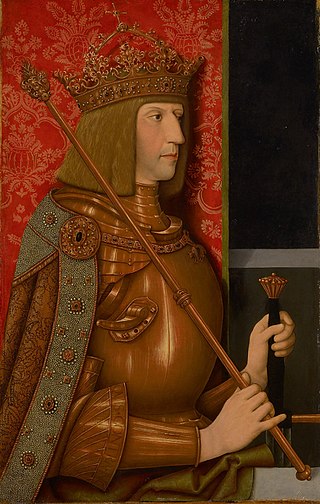
Maximilian I was King of the Romans from 1486 and Holy Roman Emperor from 1508 until his death in 1519. He was never crowned by the Pope, as the journey to Rome was blocked by the Venetians. He proclaimed himself elected emperor in 1508 at Trent, thus breaking the long tradition of requiring a papal coronation for the adoption of the Imperial title. Maximilian was the only surviving son of Frederick III, Holy Roman Emperor, and Eleanor of Portugal. Since his coronation as King of the Romans in 1486, he ran a double government, or Doppelregierung, with his father until Frederick's death in 1493.

The Holy Roman Emperor, originally and officially the Emperor of the Romans during the Middle Ages, and also known as the Roman-German Emperor since the early modern period, was the ruler and head of state of the Holy Roman Empire. The title was held in conjunction with the title of king of Italy from the 8th to the 16th century, and, almost without interruption, with the title of king of Germany throughout the 12th to 18th centuries.
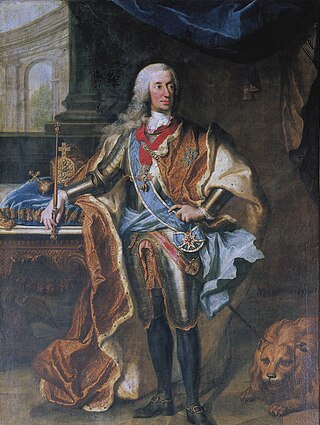
Charles VII was Prince-Elector of Bavaria from 26 February 1726 and Holy Roman Emperor from 24 January 1742 to his death. He was also King of Bohemia from 1741 to 1743. Charles was a member of the House of Wittelsbach, and his reign as Holy Roman Emperor thus marked the end of three centuries of uninterrupted Habsburg imperial rule, although he was related to the Habsburgs by both blood and marriage.
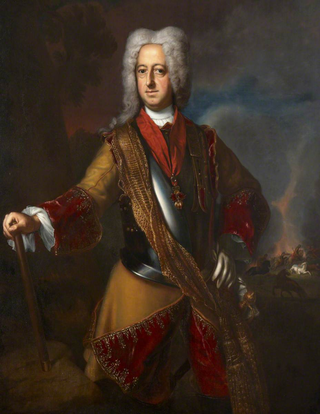
Maximilian II, also known as Max Emanuel or Maximilian Emanuel, was a Wittelsbach ruler of Bavaria and a Prince-elector of the Holy Roman Empire. He was also the last governor of the Spanish Netherlands and Duke of Luxembourg. An able soldier, his ambition led to conflicts that limited his ultimate dynastic achievements.

Imperial Reform is the name given to repeated attempts in the 15th and 16th centuries to adapt the structure and the constitutional order of the Holy Roman Empire to the requirements of the early modern state and to give it a unified government under either the Imperial Estates or the emperor's supremacy.

Archduke was the title borne from 1358 by the Habsburg rulers of the Archduchy of Austria, and later by all senior members of that dynasty. It denotes a rank within the former Holy Roman Empire (962–1806), which was below that of Emperor and King, roughly equal to Grand Duke, but above that of a Prince and Duke.

A bracteate is a flat, thin, single-sided gold medal worn as jewelry that was produced in Northern Europe predominantly during the Migration Period of the Germanic Iron Age. Bracteate coins are also known from the medieval kingdoms around the Bay of Bengal, such as Harikela and Mon city-states. The term is also used for thin discs, especially in gold, to be sewn onto clothing in the ancient world, as found for example in the ancient Persian Oxus treasure, and also later silver coins produced in central Europe during the Early Middle Ages.
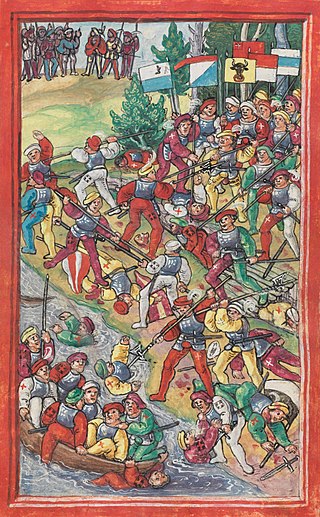
The Swabian War of 1499 was the last major armed conflict between the Old Swiss Confederacy and the House of Habsburg. What had begun as a local conflict over the control of the Val Müstair and the Umbrail Pass in the Grisons soon got out of hand when both parties called upon their allies for help; the Habsburgs demanding the support of the Swabian League, while the Federation of the Three Leagues of the Grisons turning to the Swiss Eidgenossenschaft. Hostilities quickly spread from the Grisons through the Rhine valley to Lake Constance and even to the Sundgau in southern Alsace, the westernmost part of the Habsburg region of Further Austria.
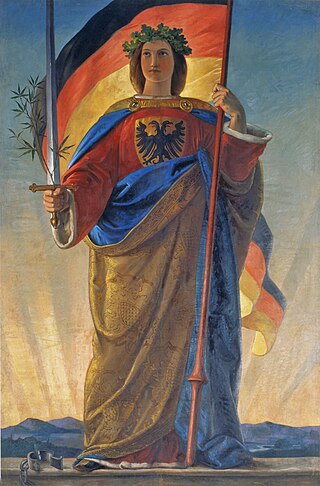
Germania is the personification of the German nation or the Germans as a whole. Like many other national personification symbols, she appeared first during the Roman Era. During the Medieval era, she was usually portrayed as one of the lands or provinces ruled by the emperors of the Holy Roman Empire, and not as the most prominent but in a subordinate position to imperial power and other provinces. Around 1500, together with the birth of the Holy Roman Empire of the German Nation, Emperor Maximilian I and his humanists reinvented her as Mother of the Nation.
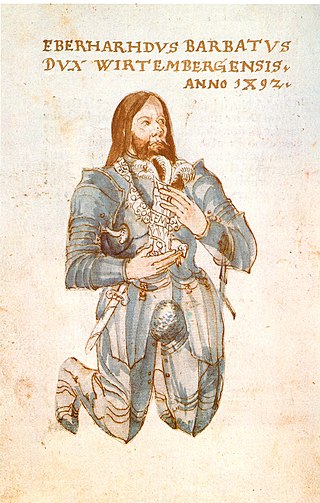
Eberhard I of Württemberg was known as Count Eberhard V from 1459 to 1495, and from July 1495 he was the first Duke of Württemberg. He is also known as Eberhard im Bart.

Maximilian Ernest of Austria, was an Austrian prince member of the House of Habsburg and by birth Archduke of Austria.
The name imperial government denotes two organs, created in 1500 and 1521, in the Holy Roman Empire of the German Nation to enable a unified political leadership, with input from the Princes. Both were composed of the emperor or his deputy and 20 — later 22 — representatives of the Imperial States and in both cases, the imperial city of Nuremberg was the seat of government. The creation of a functional imperial government was the central plank of the Imperial Reform the princes attempted in the early 16th Century. Both attempts failed after a short time, due to the resistance of the Emperor and the divergent interests of princes.
The Ewiger Landfriede of 1495, passed by Maximilian I, German king and emperor of the Holy Roman Empire, was the definitive and everlasting ban on the medieval right of vendetta (Fehderecht). In fact, despite being officially outlawed, feuds continued in the territory of the empire until well into the 16th century.

At the Diet of Wormsin 1495, the foundation stone was laid for a comprehensive reform (Reichsreform) of the Holy Roman Empire. Even though several elements of the reforms agreed by the Imperial Diet (Reichstag) at Worms did not last, they were nevertheless highly significant in the further development of the empire. They were intended to alter its structure and constitutional ordinances in order to resolve the problems of imperial government that had become evident.
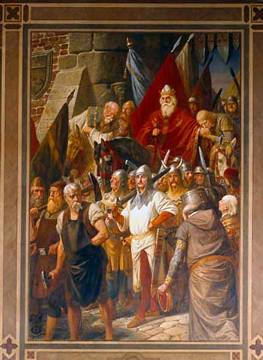
Under the law of the Holy Roman Empire, a Landfrieden or Landfriede was a contractual waiver of the use of legitimate force, by rulers of specified territories, to assert their own legal claims. This especially affected the right of feuding.

The Treaty of Tübingen was a treaty signed in the Duchy of Württemberg between its Duke, Ulrich, and the Estates of Württemberg. The treaty concluded the Poor Conrad revolt against Ulrich and annulled his recent taxes on the populace of the Duchy, while the Estates of his realm agreed to liquidate his substantial debts.

Maximilian I was Holy Roman Emperor from 1508 until his death.
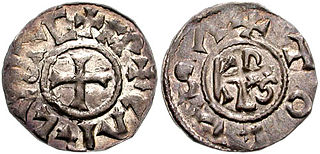
The Carolingian monetary system, also called the Carolingian coinage system or just the Carolingian system, was a currency structure introduced by Charlemagne in the late 8th century as part of a major reform, the effects of which subsequently dominated much of Europe, including Britain, for centuries. It is characterised by having three denominations in the ratio 1:20:240, the units of which went under different names in the different languages, but which corresponded to the Latin terms libra (pound), solidus (shilling) and denarius (penny).















